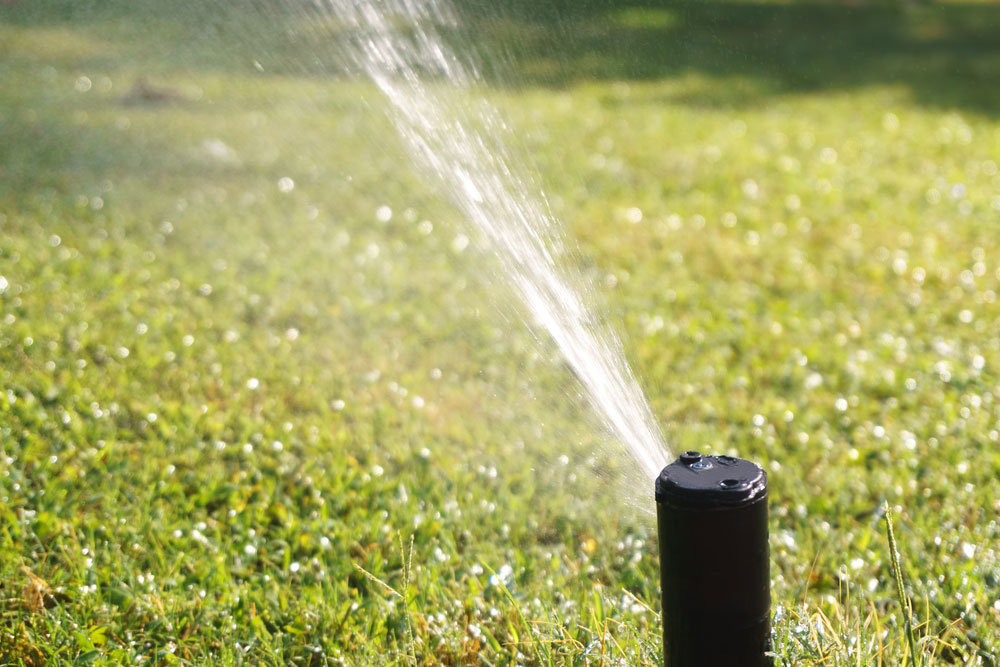
During the autumn months, keeping your lawn looking its best and healthy can be a tricky proposition as a number of common lawn issues can be prevalent during this time of the year.
Some of these problems stem from pests and fungal issues, while others are due to environmental factors affecting your particular landscape.
Here at High Quality Turf we’re passionate about all matters lawn related and have expert advice on how to look after your lawn all year round. We’ve put together this blog to help our customers identify and treat common Autumn lawn issues, in order to ensure any damage is minimised and provide valuable protection to your lawn going forward.
Brown Patches and Lawn Dieback
One of the most common lawn problems is dead brown patches and lawn dieback. This is most likely caused by issues with your soil and drainage, along with not following proper lawn maintenance.
In order to support a healthy lawn your soil needs to have a balanced nutrient content and have good drainage. To get an accurate picture about the quality of your soil, you can get a soil PH test done to identify any particular problems and determine the best possible treatment. DIY soil PH testing kits are available from most nurseries and you can also talk to your local expert turf supplier for any further expert advice.
To control any current outbreaks you should apply a fungicide with the common active ingredient of Prodione. Once this is done you will need to implement proper lawn care maintenance including; thatching, regular watering, mowing at regular intervals, and applying an adequate fertiliser.
Weeds
There are a number of factors in Autumn that can create ideal conditions for weeds to emerge. During the colder climate there is more moisture around and since lawns go into dormancy there is also reduced competition. Coupled with poor lawn maintenance such as very low mowing, inadequate watering, and insufficient fertilising, this can result in weeds flourishing.
Common weeds in autumn include sour sobs, winter grass, and broad leaf weeds such as clovers and bindi.
The best way to tackle these types of weeds is through a combination of steps. As an initial starting point, for larger weeds you can take these out by hand. Depending on the type of weed you can then apply a targeted selective herbicide. Going forward to limit any future outbreaks make sure you follow proper lawn maintenance including mowing at a proper height, adequate watering, and adding fertiliser when appropriate.
Moss
Moss has been around for a long long time, over 350 million years to be exact. They love conditions that are shaded, wet and compacted, exactly the type of conditions your turf hates, so if you start to see the presence of moss you need to act quickly.
Moss in lawns is an indication that there is an underlying problem with the lawn, this can be caused by a variety of factors including; poor drainage, shade, additional moisture, along with poor lawn maintenance and heavy foot traffic.
The elimination of moss is a two step process, firstly initially getting rid of the moss, and then addressing any factors to stop it from coming back. Firstly remove the moss by hand and then scarify (remove thatch from lawn) the affected area. If your moss problem is large you will need to also apply a moss killer evenly across the whole lawn to prevent patchynes or discolouration in new growth.
To stop the moss from coming back you will need to address environmental factors such as improving drainage and reducing any unnecessary shade. After removing the moss and addressing the causes, this is also an ideal time to apply fertiliser to encourage repair and regrowth.

Lack of Water
The Australian climate can be unforgiving, we can be susceptible to periods of extended drought in summer which can continue through to other times of the year. Unfortunately if your lawn hasn’t been watered adequately this can make it susceptible to a number of issues.
If drought conditions continue through to autumn, make sure you water your turf deeply with deep soaks. Otherwise if conditions are more favourable your lawn will require less water than in the warmer climate, and you can back off your watering to instances when your lawn needs it.
In autumn you should generally water your lawn once to twice a week in the mornings. This time of the day is best as watering in the evening can result in the lawn staying damp and thus creating conditions that promote fungus growth.
Damage from pests or diseases
If you’ve had outbreaks of pests or disease in previous years, if not treated properly, chances are they’ll make a comeback again in autumn. Fungus and pests such as lawn grubs can be particularly prevalent during this time of the year.
Fungus growth in autumn can cause dead and damaged spots that you only see in spring. To prevent any outbreaks you can use an appropriate fungicide. For pests such as lawn grubs you can apply a targeted pesticide to stop existing larvae and prevent further hatching. Ensure you combine any applied treatment with fertiliser and adequate watering to make sure the pesticide reaches deep into the soil and reaches all affected areas.
With the onset of autumn, you may think that your lawn care maintenance will be greatly reduced with not much to do. However after the stress of summer and with additional moisture in the air, your turf is more vulnerable to common lawn issues that are prevalent with the onset of a colder climate.
Brown patches and lawn dieback, weeds, moss, and damage from pests and diseases can all affect your lawn in autumn. Coupled with poor lawn maintenance, this can lead to minor problems quickly spreading into outbreaks.
As an initial starting point you can get a soil PH test done to identify any particular problems and determine the best possible treatment. Once you have identified the issue you can; first apply hand removal, depending on the issue, apply the applicable selective herbicide or targeted pesticide, and then look at implementing steps to improve environmental factors such as improved drainage and reduction of shade.
To avoid any of these issues from coming back it’s imperative that you implement good lawn care maintenance throughout the year. This includes reducing thatch levels, morning watering at adequate levels depending on the time of year, regular mowing at an appropriate height, and the application of a good fertiliser.
We hope this blog has been helpful. If you require any further information about lawn maintenance or any other turf related issues look no further than us here at High Quality Turf.
We have our very own turf farm, and are happy to provide helpful advice from seedling all the way through to all year round lawn maintenance.
For any of your Turf needs, why not contact us today.

